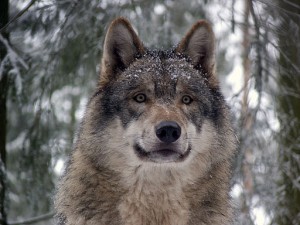Protected Areas Under Threat
An alarming new study has reported that one third of all the world’s protected areas are now under intense pressure from human activity.
 Image: By U.S. Fish and Wildlife Service [Public domain], via Wikimedia Commons
Image: By U.S. Fish and Wildlife Service [Public domain], via Wikimedia Commons An alarming study by the University of Queensland, Wildlife Conservation Society (WCS) and University of Northern British Columbia confirms that one third of the world’s protected areas (a total of 2.3 million square miles) are now under intense human pressure from activities including road building, grazing and urbanisation.
The study, published in the journal Science, is a reality check for nations striving to meet commitments under the Convention on Biological Diversity (CBD) to halt biodiversity loss through protected area creation. Since 1992, the global extent of protected areas has roughly doubled in size; more than 202,000 cover more than 15% of the world’s terrestrial area, with a goal of at least 17% coverage by 2020.
Though management objectives differ, ranging from strict biodiversity conservation areas to zones permitting certain human activities and sustainable resource extraction, the primary goal of all protected areas is to conserve nature.
The authors looked at global “Human Footprint” maps to make their assessment which shows that 32.8% of protected land is highly degraded. Of the protected areas created before the CBD was ratified 1992, 55% have since experienced human pressure increases. The authors warn that CBD goals will be severely undermined if widespread human pressure continues inside protected areas.
The paper’s lead author, Kendall Jones from the University of Queensland, said: “A well-run protected area network is essential in saving species. If we allow our protected area network to be degraded there is a no doubt biodiversity losses will be exacerbated.”
The study shows that governments are overestimating the space available for nature inside protected areas. Governments are claiming these places are protected for the sake of nature when in reality they aren’t. It is a major reason why biodiversity is still in catastrophic decline, despite more and more land being ‘protected’.
However, the authors are not suggesting that high pressure protected areas be de-gazetted or defunded. To the contrary, it is crucial that nations recognise the profound conservation gains that can be realised by upgrading and restoring degraded protected areas while respecting the needs of local people.
The most impacted protected areas were found in Asia, Europe, and Africa in places with massive human populations. But the study did find some good news: protected areas with strict biodiversity conservation objectives are subject to significantly lower levels of human pressure.
Professor James Watson, the study’s senior author, says: “We know protected areas work – when well-funded, well-managed and well placed, they are extremely effective in halting the threats that cause biodiversity loss and ensure species return from the brink of extinction. There are also many protected areas that are still in good condition and protect the last strongholds of endangered species worldwide. The challenge is to improve the management of those protected areas that are most valuable for nature conservation to ensure they safeguard it. Most importantly we’ve got to recognise that these jewels in the crown need support – there are some protected areas that are safeguarding nature and that still haven’t got any evidence of human encroachment in them. We must ensure these values are maintained.”





Sorry, comments are closed on this post